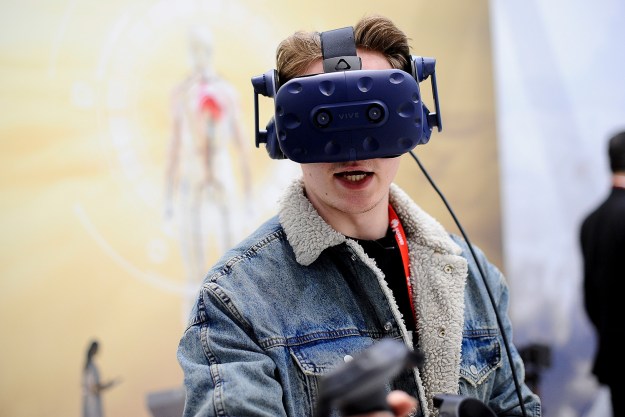“Ready to debut a new product in VR? Want to create an API to track a pet (or your coffee table) within the VR world? Want to track a keyboard in VR? Tell us how and why,” the company states. “Remember, the Vive Tracker will integrate with any number of future VR accessories and tools, so we’re looking for new thinking that keeps VR open, fun, functional, future-looking, and maybe even a little weird.”
The Vive Tracker is an accessory for virtual reality content creation. It connects wirelessly to the HTC Vive headset and weighs less than three ounces, enabling the device to easily attach to existing physical objects or interesting new form factors. The Vive Tracker seemingly eliminates the need to spend loads of time and money integrating tracking sensors into VR-focused peripherals.
The tracking device measures 3.92 by 1.66 inches and includes a USB interface for adding additional hardware like the Raspberry Pi board, or a DSLR camera for blending the real world with the virtual one. Some of the applications presented during the Vive Tracker reveal a few weeks ago included haptic gloves for VR, the first VR-dedicated camera, and more.
That said, interactive design and production studio Dotdotdash was one of the first developers selected to use the Vive Tracker. The company thus created the very first camera accessory for VR, enabling users to take physical photographs of their virtual reality experiences. The camera includes multiple overlays and tooltips that do not exist in the physical unit, such as changing the zoom and adjusting the filtering effects.
The Vive Tracker doesn’t ship until the second quarter of 2017, but HTC is calling on the developer and creative communities now to be one of the first to use the device for free. The company wants users to help the world “rethink VR,” and to prove that the “possibilities are endless.” However, the catch is that, according to the application, HTC is allowing developers to borrow a unit at no cost.
“We are lending a limited number of Trackers to developers for free,” the application states. “Companies providing more detail in their application with clear goals on how they plan to use Tracker will have a higher chance to receive one of the developer kits. HTC Vive reserves the right to recall the Vive Trackers at our discretion.”
Applicants are required to specify a company, to describe said company, and describe the project that will utilize the Vive Tracker. Applicants can also attach a link to a downloadable demo/prototype and a target release date, but that information isn’t necessary to submit the application but it could help.
The HTC Vive headset is reportedly outselling the Oculus Rift partially due to its open-platform roots. It’s powered by Valve Software’s SteamVR platform and is compatible with the Steam digital market. The HTC Vive system costs $800 and comes with the headset, two motion tracking controllers, two base stations, and earbuds.
Editors' Recommendations
- HTC aims to turn your carpool into a VR roller coaster
- HTC’s leaked Vive Flow headset might offer portable VR
- Everything HTC announced at ViveCon 2021: Vive Focus 3 and Vive Pro 2
- Two new ‘game-changing’ VR headsets could arrive at HTC’s ViveCon next week
- Oculus Rift vs. HTC Vive


